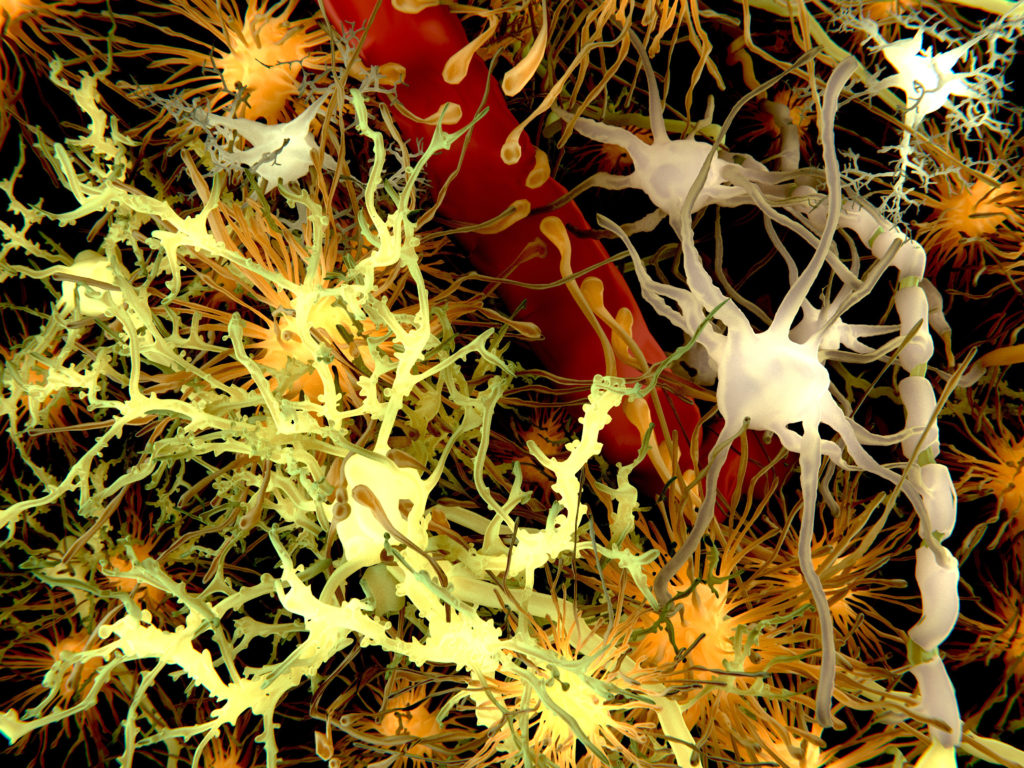Can Alzheimer’s disease be transferred to Other diseases?

Transferability of the pathological Amyloid-Beta proteins confirmed
Alzheimer’s is a dreaded neurodegenerative disorder that primarily affects older people and their proliferation has increased in the past decades dramatically. Already in the year 2015, researchers had expressed the end of the Univesity College London suspected that a Transferability of the disease, the misfolded Amyloid-could be proteins. In laboratory tests on mice, they confirmed the suspicion.
Alzheimer’s is considered a non-communicable disease. There is no contagion to the regular contact with threatens to be Affected, to emphasise the British scientists. However, a study from the year 2015, showed the first evidence that the pathological Amyloid-Beta can be transferred to proteins may, in the course of medical treatments, from person to person. In their latest study, the researchers from the University College London were able to confirm this now. Their results were published in the scientific magazine “Nature”.

Transmission of hormone therapy?
“Our previous study found that some of the people who had developed many years after treatment with pituitary growth hormone and Creutzfeldt-Jakob disease, also had deposits in the brain of an abnormal Protein, the disease is Alzheimer’s characteristic,” says the study’s lead author, Professor John Collinge of the output position of the current investigation. The cause, the researchers suspected in the Transfer of misfolded protein structures with the growth hormones. In their current study, they have demonstrated that the pituitary growth hormone actually containing the corresponding Amyloid-Beta proteins.
Impurities in the growth hormones proven
“The results support the hypothesis that Amyloid was transferred to Beta by this long-interrupted medical treatment accidentally to patients,” explain the researchers in a press release. The human growth hormone – the was manufactured prior to 1985 human tissue – have actually included facilities of the Amyloid Beta-Protein of Alzheimer’s disease. In the next step, the research reviewed team, whether the Protein impurities in the growth hormones to the development of Amyloid lead deposits, which are typical for Alzheimer’s disease.
Tests on mice
The researchers injected transgenic mice that contaminated growth hormone into the brain, and were able to determine that less than twelve months, “a clear seeding of amyloid pathology in their brains” took place. The same was observed in mice, which was injected with the tissues of patients with typical Alzheimer’s disease. Mice which had been injected with synthetic growth hormones or normal brain tissue, however, showed no such pattern.
Amyloid-Beta pathology is transferable
“Now, we have presented experimental evidence to support our hypothesis that Amyloid can be transferred to Beta-pathology materials from contaminated to people,” said Professor Collinge. Whether through medical or surgical intervention Alzheimer’s disease in humans, or transfer can be caused, however, not yet clearly say. “It will be important to review the risks of the Transmission of the amyloid pathology in other medical procedures that are still used today, – including instruments for brain surgery,“ says the expert.
A contagion is in danger of contact with Alzheimer’s patients
The current study provides new insights into the molecular mechanisms underlying the role of Amyloid in Alzheimer’s disease based, however, the researchers emphasized explicitly that there is currently no evidence for a Transmission of Alzheimer’s disease between people. The study give no indication that you can get Alzheimer’s disease through contact with a sick Person. (fp)




